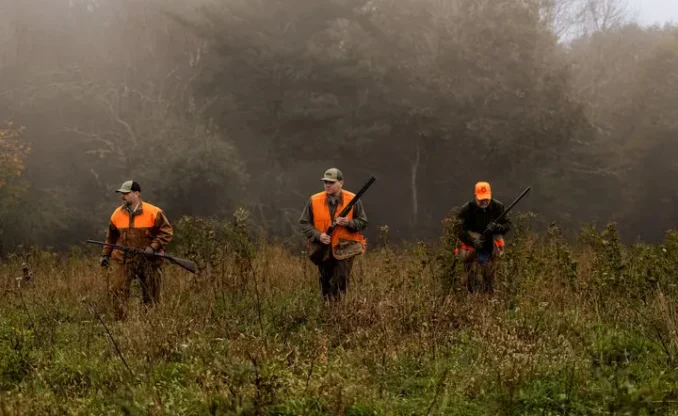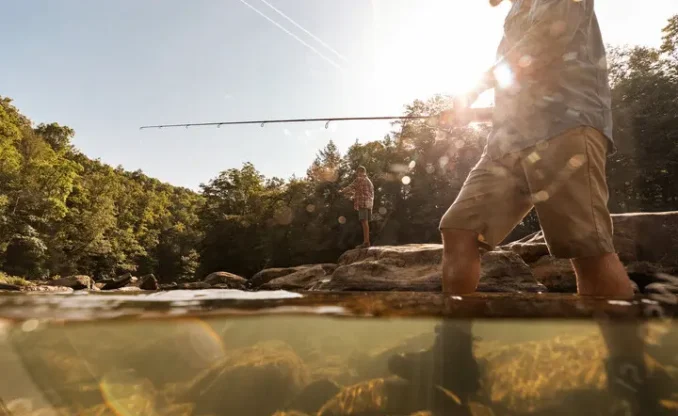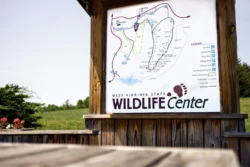Conservation is at the heart of the WVDNR’s mission to provide and administer a long-range comprehensive program for the exploration, conservation, development, protection, enjoyment and use of West Virginia’s natural resources.
West Virginia Wild Yards Program
Many people provide habitat for wildlife around their homes without realizing it. Bird feeders, fruiting plants, and water sources attract wildlife into our yards, fulfilling their needs and providing us with hours of enjoyment. Studies show gardening and spending time outdoors is good for you. Landscapes filled with native plants help improve our quality of life and make our spaces more pleasant and enjoyable to live in, for us and for wildlife. Sharing space with wildlife and landscaping with their habitat needs in mind can be an enjoyable and inexpensive pastime.
The Wildlife Diversity Program (WDP) of the West Virginia Division of Natural Resources has developed the Wild Yards Program to recognize the efforts of backyard landscapers to create and maintain wildlife habitat. Approved properties will be entered into a registry of certified Wild Yards kept by the WDP. The applicant will receive a certificate and a sign that can be placed in the backyard habitat to let everyone know that the area is part of a statewide network of WV Wild Yards.
Why go wild? A diverse wild yard requires much less maintenance than a traditionally landscaped yard. Once established, native plants don’t require additional watering, chemical fertilizers or pesticides because they are adapted to local conditions and local insect pests. Those native insects are also important food for other wildlife. Landscaping with native plants can also save you money. Using plants native to your area in your yard can reduce outdoor water use by 20 to 50 percent. You can reduce your heating and cooling costs by planting native shrubs to shade your air conditioning unit, or by planting native deciduous trees on the south and west sides of your house. Trees that grow tall enough to shade the roof from afternoon sun can lower indoor air temperatures by up to 10 degrees F, and when the trees drop their leaves in the winter, they can let the winter sunlight warm your home. Growing less turf grass lawn and more native plants also helps to reduce the air pollution from exhaust and noise pollution from noisy lawn mowers and leaf blowers. Leaving the leaves in the fall provides habitat for many species that use the leaf litter for food or shelter, and the leaf litter also suppresses weeds and naturally fertilizes the soil as it breaks down. These are just a few benefits to landscaping with wildlife in mind.
How do you attract wildlife to your yard? Focus on providing the four necessary components all wildlife need: food, water, cover, and places to raise young. You can start small by providing feeders, birdbaths, and nest boxes for a few backyard songbirds, or dream big and restore a native meadow for dozens of species. Whether you live on a quarter-acre suburban lot, a five-acre townhouse development, or in a city apartment, you can provide habitat for wildlife. You can start right away by filling a new birdfeeder with sunflower seeds, hanging a nest box, or planting milkweed for butterflies.
If you have questions about the WV Wild Yards program or want to learn more about how to improve wildlife habitat in your yard, contact:
DNRWildYards@wv.gov
(304) 637-0245
West Virginia Wild Yards, Wildlife Diversity Program, WVDNR
P.O. Box 67
Elkins, WV 26241
How to Apply
The Wild Yards Manual has information and guidelines on how to provide the necessary habitat components for wildlife. Read the online manual or contact the Wild Yards Program to receive a paper copy, and then fill out a Wild Yards application once you believe your yard meets the needs of wildlife.
Download the Wild Yards Manual
Apply Online
Printable Application
Other Resources
WV Native Plant Selection Tool
Sources of WV Native Plants
Invasive Plants in West Virginia
Butterfly Gardening Brochure



